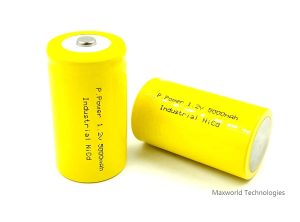What exactly is Cold Cranking Amp?

When researching batteries, have you come across the phrase “cold crank amp”? What does this indicator mean? When does it become significant? Take a closer look at this energy idea and what it means for batteries as we address all of these issues today.
What is Cold Cranking Amp?
It is vital to have guidelines in place to assist purchasers in comparing several batteries and selecting the one that best suits their needs when looking to replace an old battery used to start an engine. These specifications cover cold cranking amps. It gauges the amperage that a rechargeable battery can generate in 30 seconds at 0 degrees Fahrenheit with a voltage of at least 7.2 volts.
The intention is to give potential customers a sense of how much power these batteries can produce in below-freezing temperatures. This is crucial for batteries that start machines or automobiles in cold regions. Lead-acid batteries’ chemical composition is significantly impacted by cold weather. Even though it might be good in warm weather, all batteries chemically react more slowly in cold weather.
What does the battery's MCA stand for?
Marine Cranking Amplifier, sometimes known as MCA, is a slightly distinct idea from Cold Cranking Amperage. It is primarily utilized on boats and other water-based applications, as the name would imply. Buyers of land-based batteries can therefore typically disregard the MCA rating. This is one of a number of other ratings, along with the HCA (Hot Crank Amplifier), which registers an average temperature of 80 degrees Fahrenheit.
How similar are MCA and CCA?
Although there is a significant difference between the two ideas, it should be clear to anyone with even a passing understanding of logic. The MCA measures the magnitude of the current at 32 degrees Fahrenheit (the freezing point of water), as opposed to measuring the current drawn by the battery at 0 degrees. This is due to the fact that most ships avoid the ocean when the temperature falls below 32 degrees Fahrenheit. This is done for convenience and comfort. Many lakes and rivers could freeze over at these temps.
Is there a cold crank rating for Maxworld power batteries?
You won’t discover CCA ratings for Maxworld power batteries, so don’t waste your time looking. For batteries used to start cars or other equipment, cold cranking amps are crucial. The Maxworld power battery is not intended for that. Maxworld Power batteries are made to deliver constant current at any temperature and long-lasting power.
Our batteries do not have a CCA rating because they are not intended to start an engine. The greatest batteries for energy storage applications are those made by us.
Our batteries use a battery management system to control the battery’s output and safeguard both the power system and the battery. Instead, our Maxworld Power solutions are ideal for home backup battery packs, boat or RV home batteries, and off-grid energy storage.
A starter battery performs entirely distinct functions than a battery. They need a big energy boost, which is immediately replenished by starting the engine. Because you must be able to start the engine in the cold, CCA is crucial for these starting scenarios. The starter battery, however, was unable to retain energy when that was attempted.
What is the required amount of cold crank amps?
The engine requires roughly one amp per cubic inch of displacement, which is a solid generalization. Depending on the size of the engine, this translates approximately 250 to 600 cold cranking amps for the majority of automobiles. Commercial or larger vehicles might need more. Actually, some bigger buses or RVs could need up to 1000 cold cranking amps or more! If you’re unclear, consult the literature for your vehicle or piece of equipment to see how much you need.
Will the engine be harmed by additional cold cranking amps?
No, the engine starter just consumes the energy it requires. By doing this, you can perhaps steer clear of issues while trying to start the engine in really cold weather. When the alternative is a car that won’t start in the cold, it’s better to be cautious than sorry.
However, keep in mind that adding a starter battery pack in excess might be dangerous. Since lead-acid batteries lack any BMS safety, a large battery pack could accidently short out and cause an explosive arc flash.
Are cold-cranking amps actually important?
It depends, is the response to this query. When starting an engine in an area where the temperature is frequently below freezing, a cold cranking amp is crucial. The CCA rating of a battery must be considered before purchasing because the cold can significantly reduce its performance. With this information at your disposal, you can choose the optimal starter battery choice for your vehicle or system at the time of your subsequent purchase.
You can disregard the CCA and concentrate on other battery parameters, such as the reserve capacity, if you’re choosing a vehicle or truck battery expressly to use in a temperate or warm environment. Remember that your car can die early or not start in a cold snap if you don’t adhere to the manufacturer’s guidelines for CCA.
A cold-cranking amp won’t matter at all for individuals purchasing batteries that are intended for long-term or deep-cycle storage. CCA is simply not a meaningful statistic if the battery is not required to deliver short bursts of energy. In fact, lithium should be a consideration for any consumer looking to employ batteries for storage. Any lead acid battery cannot compare to the performance of our Maxworld Power line.
Conclusion:
The environmental impact oflithium batteries, particularly in terms of recycling and sustainability challenges, requires concerted efforts from governments, industries, and consumers. Advancing recycling technologies, improving infrastructure, and promoting sustainable sourcing practices are essential steps to mitigate the environmental consequences of lithium battery production and disposal. By prioritizing responsible recycling and implementing sustainability measures, we can work towards a future where lithium batteries continue to be a vital part of our modern lives without compromising the environment and its resources.






